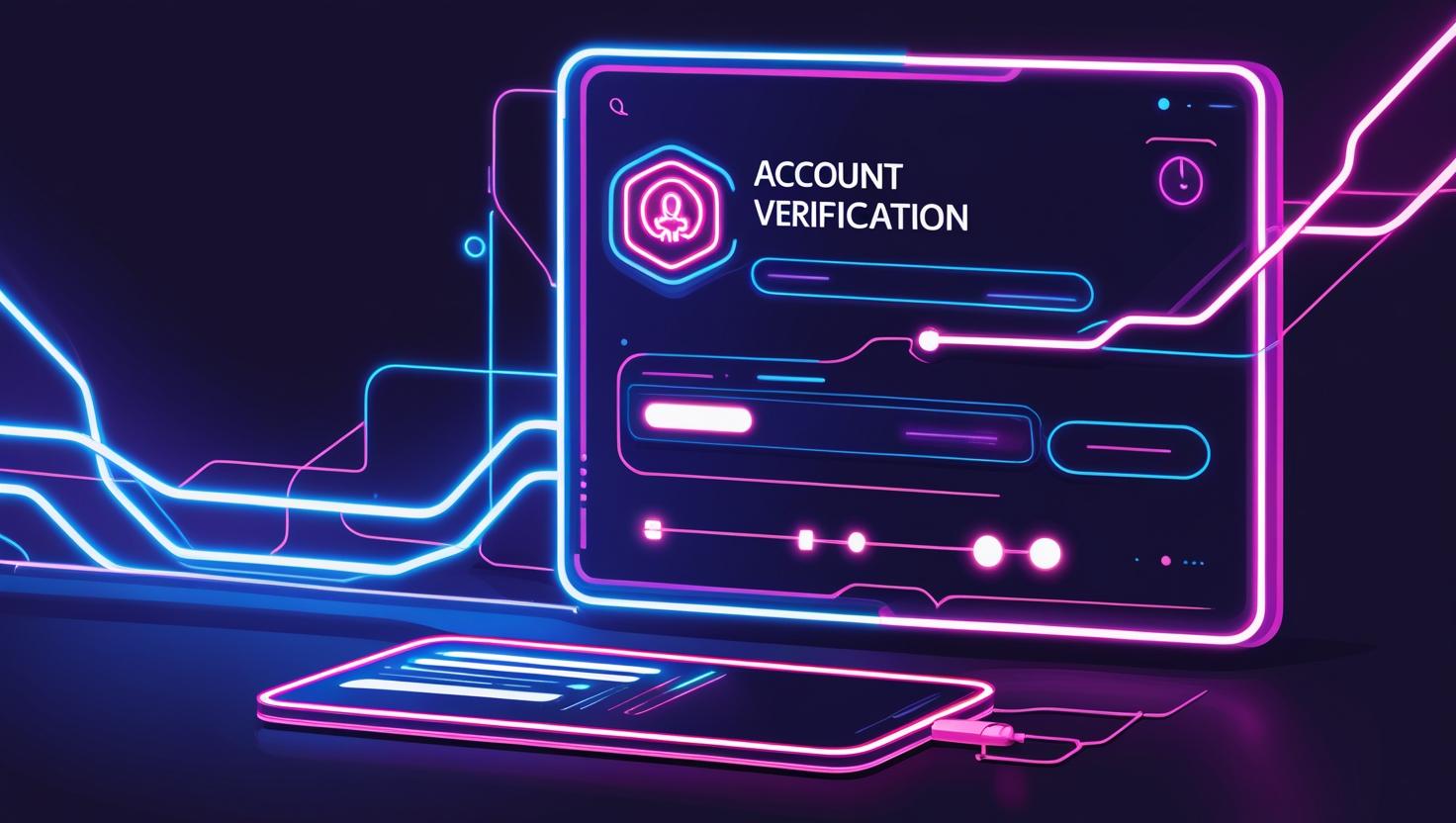CashWash Slot by Popiplay: Why Canadian Players Can’t Stop Spinning on Miracle.Casino
Discover why CashWash by Popiplay is trending on Miracle.Casino. Fast spins, crypto payouts, daily free spins, and real wins for Canadian players.

Cryptocurrency is a type of digital money that people can use to buy things, send payments, or invest. In Canada, digital assets like Bitcoin have certain legal rules and tax laws that people should know about before they buy.

Cryptocurrency is a form of digital or virtual currency. It is based on computer code and uses cryptography to keep it secure. Unlike regular money, cryptocurrencies do not have physical coins or bills.
Most cryptocurrencies use a system called blockchain. Blockchain is a digital ledger that records every transaction made with the currency. This makes it hard for people to cheat or fake transactions.
People can use cryptocurrency to pay for items online, send money across borders, or as an investment. Bitcoin was the first cryptocurrency, but now there are thousands of different digital coins and tokens. Most are available for anyone to buy or sell on the internet.
Crypto is not legal tender in Canada. This means shops and businesses do not have to accept Bitcoin or other digital currencies as payment. The only official money in Canada is the Canadian dollar.
It is legal to buy, sell, and trade cryptocurrencies in Canada. The government treats crypto as a form of property, not as official money. That means people must report any profits from trading or investing in crypto on their taxes.
Crypto exchanges in Canada must follow strict rules. These rules are meant to stop crime and protect people's money. Exchanges must register with financial authorities and follow anti-money laundering laws.
There are different types of digital assets in Canada. The most common type is cryptocurrencies. These include coins like Bitcoin (BTC), Ethereum (ETH), and Litecoin (LTC).
Another popular type is stablecoins. Stablecoins are digital coins tied to the value of regular money, like the U.S. dollar. This makes them less likely to change in price quickly.
Some digital assets are called tokens. Tokens can have many uses, such as giving access to a product, service, or community. Some tokens are used just for trading.
| Type | Example | Use |
|---|---|---|
| Cryptocurrency | Bitcoin, Ethereum | Payments, trading, investing |
| Stablecoin | USDT, USDC | Store value, trading |
| Token | Chainlink, Uniswap | Specific applications |

Finding a reliable crypto exchange is important in Canada. People should pay attention to rules, security, and which platforms are best for Canadians.
Crypto exchanges in Canada must follow specific laws. Look for platforms registered with the Canadian Securities Administrators (CSA) or regulated as Money Services Businesses (MSB) with FINTRAC. This helps protect users from scams, keeps funds safer, and ensures the exchange is following Canadian laws.
Using regulated platforms means better consumer protection. These exchanges must report suspicious activity and follow anti-money laundering (AML) rules. Some popular examples of regulated platforms include Wealthsimple Crypto, Bitbuy, and Coinsquare. Using unregulated exchanges carries more risk and may result in loss of funds.
Security is critical when choosing a crypto exchange. Users should check if the platform offers two-factor authentication (2FA) for login security. This extra step helps keep accounts safer from theft.
Also, check if most customer funds are stored in "cold wallets," which are offline and harder for hackers to access. Good exchanges are transparent about their security features and provide regular updates about any risks or problems. Look for encryption standards, insurance policies for digital assets, and review how quickly the site responds to security concerns.
It helps if the exchange performs regular third-party audits. Strong security means less risk of losing cryptocurrency due to hacks or errors.
Several exchanges are popular choices for Canadians:
| Exchange | Key Features |
|---|---|
| Wealthsimple Crypto | Simple interface, CSA regulated |
| Bitbuy | FINTRAC registered, strong security |
| Coinsquare | Easy Canadian funding, well regulated |
| NDAX | Low fees, good customer support |
| Kraken | Global reach, trusted security |
Each of these platforms offers different fees and strengths. Bitbuy and Coinsquare are known for good customer service and Canadian bank support. Kraken has a wider variety of coins and is popular worldwide. Wealthsimple Crypto is known for being easy for beginners. Always compare features, fees, and supported cryptocurrencies before signing up.

A user must create an account, provide proof of identity, and use security steps to keep the crypto account safe. Canadian law and most crypto platforms require certain documents and steps for security and legal reasons.
To start, users have to choose a crypto platform. Well-known options in Canada include Coinbase, Kraken, and Bitbuy.
After picking a platform, they should click the sign-up or register button. Basic details like full name, email address, and a password must be entered. Some platforms ask for a referral code or agreement to terms of service.
An email for account verification will arrive soon after. Clicking the link in the email activates the account. This step helps prove that the user controls the email address and wants to use the service.
Canada has strict rules to protect against fraud and money laundering. Most crypto platforms must verify who the user is before allowing them to buy or sell crypto.
The user is often asked to upload a government-issued photo ID (such as a driver’s license or passport). Sometimes, a selfie holding the ID or a piece of paper with the date is also needed. The platform checks the name, photo, and even the address.
A table of common verification documents:
| Document Type | Examples |
|---|---|
| Photo ID | Driver’s license, Passport |
| Address Proof | Utility bill, Bank statement |
| Selfie with ID | Photo with ID in hand |
This process can take a few minutes or up to a day. Most users get a notification when they are approved.
Account security is vital when dealing with crypto. Most platforms offer two-factor authentication (2FA), which makes it much harder for others to get in.
To set up 2FA, users scan a code with an app like Google Authenticator or receive codes by text. Every login or sensitive action will now need a code from the phone.
Creating a unique, long password is also important. It helps to avoid passwords used on other sites and to change passwords every few months.
Users should also watch for phishing emails and never share account details. If supported, setting up extra alerts for withdrawals or new device logins adds another layer of safety.
Before buying cryptocurrency, users must add money to their exchange accounts. Different funding methods, processing times, and fees can affect how quickly and easily they can start trading.
Crypto exchanges in Canada accept several ways to add money, but not all support the same options. The most common payment methods include:
Interac e-Transfer is the most widely supported for Canadian customers. It is usually quick and convenient. Some platforms also support credit and debit card payments, but these can come with higher fees or limits on deposit size. Wire transfers are often used for larger amounts but may take longer to process.
Users should check which payment methods their chosen exchange accepts before signing up. Some international exchanges may only accept wire transfers or crypto deposits.
Many Canadian crypto exchanges allow direct Canadian dollar (CAD) deposits. This makes the funding process simpler, as users do not need to pay currency conversion fees.
Exchanges such as Bitbuy, Coinsquare, and NDAX all accept CAD. Users can link their Canadian bank accounts or use Interac e-Transfer to add funds. Some platforms may require identity verification before allowing CAD deposits.
Depositing in CAD avoids extra steps and lets users see amounts in their local currency. It's important to use the right deposit details provided by the exchange to avoid delays or errors.
Deposit fees and processing times vary by exchange and deposit method. Many Canadian exchanges offer free Interac e-Transfers, while some charge a flat fee (for example, $1.50 per transfer).
Typical fees and times:
| Payment Method | Typical Fee | Processing Time |
|---|---|---|
| Interac e-Transfer | $0–$1.50 | Minutes to 1 hour |
| Bank Wire | $0–$20 | 1–3 business days |
| Credit/Debit Card | 2%–5% of amount | Instant to 1 hour |
| Crypto Transfer | Network fee only | 10 min–2 hours |
Some methods are faster than others. For the quickest access to funds, Interac e-Transfer is usually the best option for Canadians. Always check the latest fee schedule on the exchange’s website.

Buyers can pick from different order types and methods when buying crypto in Canada. Each method comes with its own steps and important things to consider.
To buy cryptocurrency, a user first chooses a trading pair, such as CAD/BTC or CAD/ETH, on their chosen exchange. After selecting the trading pair, the user goes to the trading screen.
They enter the amount of cryptocurrency they want to buy or how much Canadian dollars they wish to spend. Some exchanges let them pick either the amount in crypto or in CAD. Buyers should check for minimum purchase amounts before placing the order.
Using clear instructions, most exchanges provide a summary of the transaction, including fees. The user then reviews the details and clicks the “Buy” or “Place Order” button. Some exchanges may ask for extra confirmation by entering a code or approving the transaction by email or mobile app.
Market orders let users buy instantly at the best available price. The transaction happens quickly, but the final price can be slightly different than expected if there’s a sudden price change.
Limit orders let the user set the exact price they are willing to pay for the crypto. The order only completes if the market reaches that price. This gives better control but might take longer or may never fill if the price doesn't move as expected.
| Order Type | Speed | Price Control |
|---|---|---|
| Market order | Very fast | Lower |
| Limit order | May take time | Higher |
Choosing between these two depends on how fast someone wants to buy, if price is the main concern, or if market conditions are changing quickly.
After placing a buy order, the exchange usually sends a confirmation via email, notification, or app message. The user's crypto balance updates once the order is filled.
For market orders, this can happen in seconds. For limit orders, confirmation may come right away or after minutes, hours, or longer, depending on price movement.
It’s important to check transaction details for things like fees, amounts, and wallet addresses. Each exchange keeps a history of completed transactions for review. Users should save screenshots, emails, or receipts for their records, especially for future reference or tax reporting.
Anyone buying crypto should know how to keep it protected. Good storage practices help prevent loss, theft, and mistakes.
A crypto wallet is a tool that lets users store, send, and receive digital currencies. There are two main types: hot wallets (online) and cold wallets (offline).
Hot wallets are apps or online services, like those in crypto exchanges or on mobile phones. They are quick to access, so they're good for small amounts or frequent trades. However, because they connect to the internet, they are more at risk from hackers.
Cold wallets, such as hardware wallets or paper wallets, are not connected to the internet. These options protect funds from online attacks but must be kept safe from fire, theft, or loss. A wallet's safety depends on how it is set up and handled.
Keeping wallets updated, securing devices with strong passwords, and enabling two-factor authentication are simple but important steps. Choosing the right wallet depends on how often someone trades and how much they want to keep safe.
Cold storage means keeping crypto offline. This is the safest way to store large amounts long-term.
Types of cold storage:
| Method | Description | Risk |
|---|---|---|
| Hardware Wallets | USB-like devices that store keys | Loss, theft |
| Paper Wallets | Printed or written private keys | Damage, loss |
Hardware wallets are popular because they keep the private keys off the internet. Brands like Ledger and Trezor are well-known. These devices must be bought from trusted stores to avoid tampering.
Paper wallets are simply pieces of paper with printed keys or QR codes. They need to be stored in a safe, dry place. If the paper gets damaged or lost, users lose access to their crypto.
Private keys are secret codes that allow control of the crypto funds. If someone else gets a private key, they can take the crypto.
Never share private keys with anyone. Do not send private keys over email or text. It is best to write them on paper and store securely, or use hardware wallets that never reveal the key.
Make backup copies of keys and wallets and store them in different safe places, like a safe deposit box. Do not store backups online where hackers could find them. Consider telling a trusted family member how to find backups if something happens to the owner.
Losing a private key almost always means losing access to the funds. Take steps to store and protect them carefully.
Buying and selling crypto in Canada comes with tax rules that need to be followed. The Canada Revenue Agency (CRA) treats crypto as a commodity, not a currency, so transactions may be taxed differently than regular money.
The CRA requires Canadians to report their crypto activities each year. All trades, sales, or any use of crypto—like using it to pay for goods—must be listed on your annual tax return.
Important facts:
Keep track of the dates, values, and details for every crypto transaction. Good recordkeeping helps make tax time easier.
The CRA may ask to see your transaction records, so save receipts, screenshots, or wallet logs. Using a spreadsheet or a crypto tracking app can make this easier.
Crypto transactions in Canada may be taxable as either capital gains or business income. The way a person uses crypto decides how they pay taxes on it.
Examples of taxable events:
When someone sells or trades crypto and makes a profit, that profit is usually a capital gain. If crypto is used regularly for business, profits may be taxed as business income, which is taxed at a higher rate.
Losses from crypto sales can sometimes be used to lower the amount of taxes owed. Always keep detailed records to support your tax filings.
Many people lose money or personal information when buying crypto online. Knowing how to spot scams and building good habits can help keep your investment safe.
Crypto scams target new and experienced users alike. Some common forms include fake websites, phishing emails, and social media giveaway scams. Scammers may ask for passwords, send links to fake exchanges, or promise guaranteed profits.
It is important to check that a crypto exchange is licensed and uses HTTPS encryption on its site. Never give out your private keys or passwords. Be careful with unsolicited investment offers, especially those using pressure to act quickly.
If something sounds too good to be true, it usually is. Legitimate companies do not ask for payments in crypto for non-crypto services. Always double-check the official website address before entering sensitive information.
Red flags to watch for:
Staying safe starts with strong security habits. Create unique, complex passwords for each crypto account. Use two-factor authentication (2FA) when possible.
Keep your recovery phrases and private keys offline, not on your phone or computer. Store them somewhere safe, like a secure physical place.
Keep track of your crypto activity and always log out of your accounts after use. Only use popular and regulated exchanges that offer good customer support.
Start with small amounts, and never invest more than you can afford to lose. Taking these steps can reduce the risk of mistakes or theft.
Canadian crypto trends change frequently. Staying updated can help buyers make informed choices. People in Canada often watch news and market updates daily.
Popular sources for crypto news in Canada include:
Common trends in Canada:
| Trend | What It Means |
|---|---|
| Bitcoin and Ethereum | Most traded coins by volume |
| Altcoins | Popular among young investors |
| Regulation changes | New rules affect crypto platforms |
| Security focus | Rising interest in safe storage |
Social media also influences crypto trends in Canada. Many follow Reddit, Twitter (X), and Discord channels to get quick updates.
People pay attention to regulation changes, as these can affect where and how they buy crypto. The Canadian government updates rules for exchanges and wallets often.
Checking trends before buying can help avoid scams and risky coins. Many use trend charts or news alerts to track changes quickly.

Discover why CashWash by Popiplay is trending on Miracle.Casino. Fast spins, crypto payouts, daily free spins, and real wins for Canadian players.

Alex turned a coffee break into a $200 mini jackpot! Discover how Canadians play Miracle.Casino — fast, secure, crypto-friendly, with daily free spins.

Miracle.Casino Canada: fast crypto deposits, instant withdrawals, daily free spins & provably fair games. Trusted by 10,000+ players. Explore bonuses safely. 19+.

Discover Canada’s best crypto casinos of 2025 — ranked for fast payouts, big bonuses, and provably fair play. Explore trusted sites like Miracle.Casino and see why Canadians are switching to crypto gaming.